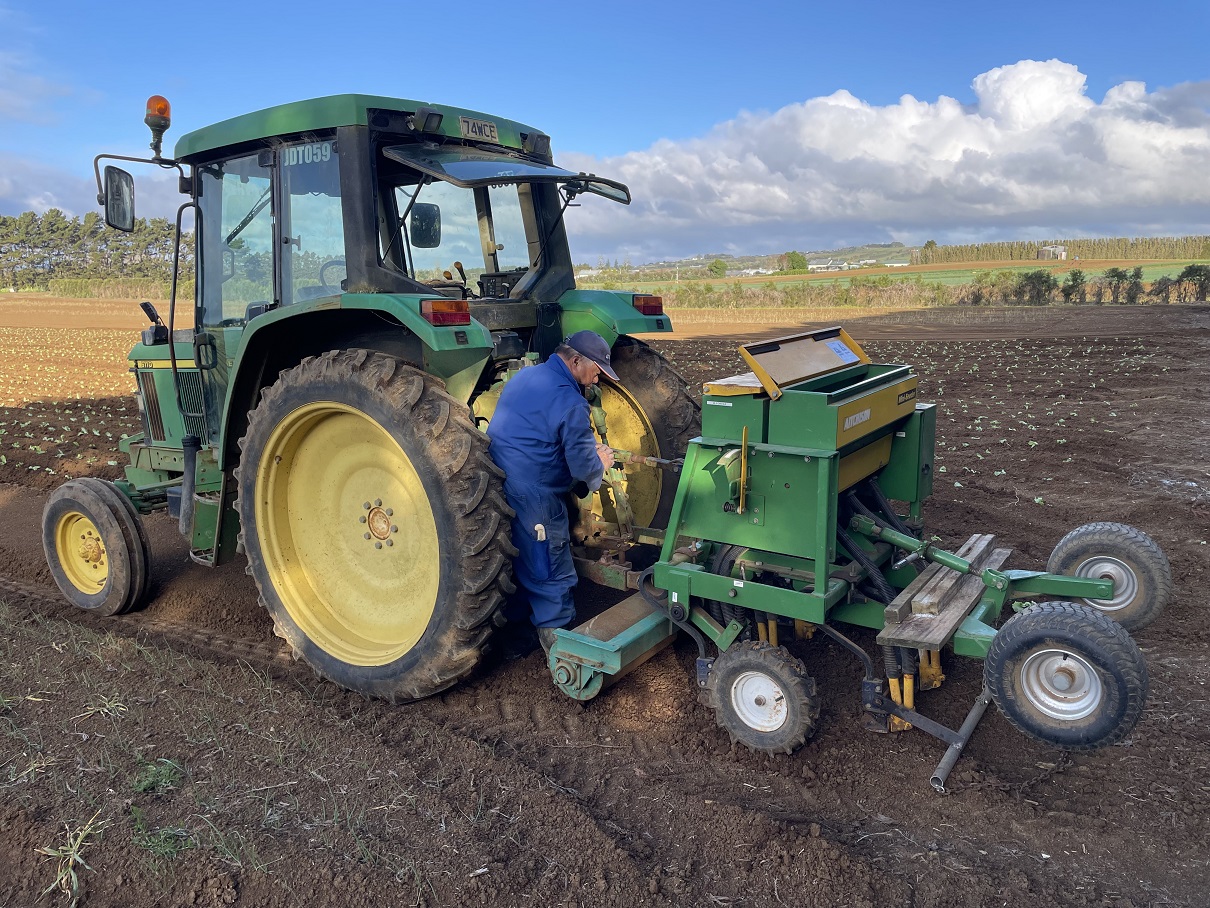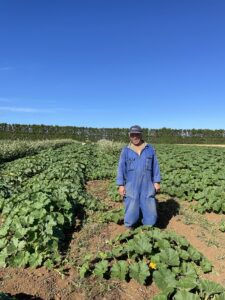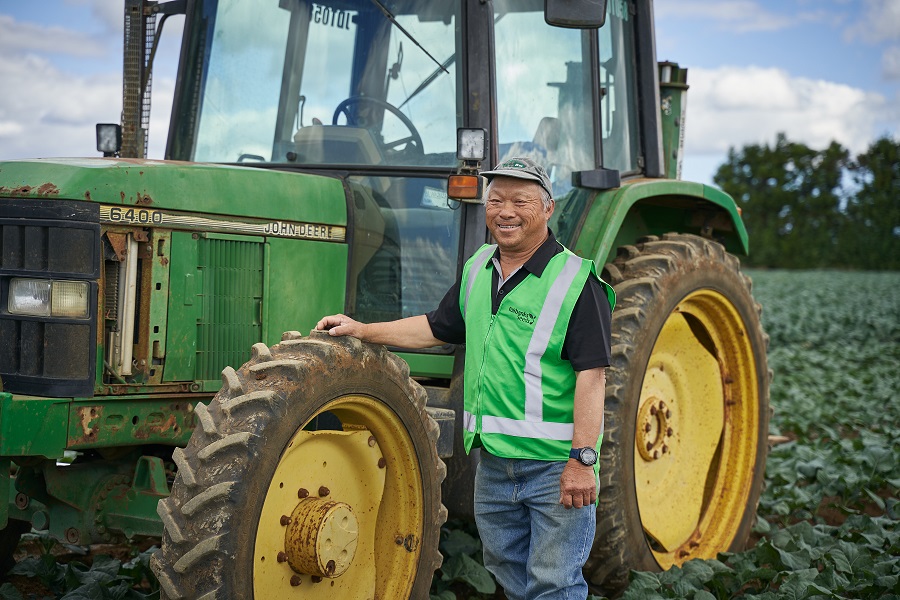Vegetable grower Howe Young knows it’s more work to scout your crop for pest and disease, but he says the threat of resistance means growers need to be only spraying when it’s required.
A grower of 58 years experience, Howe is Crop Manager for Balle Brothers and oversees the crop management at the A Lighter Touch-Vegetables NZ-Onions NZ demonstration farm at Pukekohe.
Howe is no stranger to integrated pest management (IPM), having been among the first growers to participate in courses run by IPM scientist Graham Walker, of Plant and Food Research, back in the 1980s.
However, he still describes his involvement with the A Lighter Touch programme and its focus on supporting growers to move from agrichemical reliance to more sustainable crop protection practices, as being “thrown in the deep end” and says what he has learned along the way has been eye-opening.

Howe prepares the planter for sowing the annual flower rows at at the demonstration farm. Credit Olivia Prouse.
This growing season, the farm produced a marketable spring lettuce crop, without any insecticide applications, followed by the successful harvest of a summer broccoli crop, using 60 percent biological controls, and fewer spray applications than were applied to a comparable commercial crop.
Complementing the IPM approach to crop management is the farm’s biodiversity project, designed to increase beneficial insect populations in order to help manage pest insects.
“We’ve had some quite outstanding results in terms of the IPM management of the crops, but what is has underlined for me is the importance of providing a food source for these beneficial insects.”
This was powerfully illustrated in the spring lettuce crop where aphid pressure was at the point where a spray application was required.
“It was lucky we had the cover crop there full of flowers, drawing a lot of predators into it. We mulched that crop up and the predators flew into the lettuces and kept the aphids at bay.
“I was sure in my own mind we were going to have to spray the lettuces with the way the aphid numbers were growing, but after we mulched that cover crop, the aphid numbers just started dropping down and we didn’t need to spray. It really was an eye-opener for me.”

Howe in the pumpkin block at the farm. Credit Olivia Prouse.
Howe says the biodiversity planting project at the farm has really reinforced to him the value of providing a habitat to attract beneficial insects to help with pest control. Scouting had shown high numbers of predators finding shelter and food in the companion planting and cover crops.
He understands the reluctance of commercial growers to cut back on the use of sprays because of the risk of losing a crop – especially when it’s become so expensive to grow crops.
But he points to increasing levels of resistance impacting on the number of agrichemicals available to growers, and the lack of new chemicals being registered in New Zealand. “It’s a real worry. How are we going to produce food if we can’t keep insects at bay?”
Howe cites diamondback moth (DBM) as an example, a pest which develops resistance to insecticides very quickly, and for which some control options are subject to regulatory review. As options available to control DBM in New Zealand decrease, it will become increasingly difficult for growers to rotate modes of action to prevent resistance developing, especially at times of peak pest pressure.
He acknowledges it’s easier to spray on a calendar basis than to spend a lot of time monitoring what’s actually in the crop. It also requires education and understanding of IPM principles – that it’s not only the level of pest pressure, but also the beneficial species numbers that matter, as well as other factors such as whether the level of pest pressure will have a material impact on yield.
The retail environment is another factor in the equation. “We’ve got to get the supermarkets understanding that if you want vegetables with less use of sprays, you’re going to accept a hole here and there. There’s no way to keep them perfect unless there’s a lot of spray on them.”
Howe would like to see a lot more grower interest and involvement in the work going on at the demonstration farm. He knows growers are pressed for time, and change is challenging, but he says growers are beginning to find the existing options in their toolbox are becoming limited, and new biological tools are going to be essential in the future.

Howe shares his experiences at the demonstration farm with growers, advisors and others in in the industry at field days and other sector events.
The demonstration farm plays an important role in showing growers the commercial viability of new crop protection approaches, finding out what works and removing the risk for others.
Howe is quietly pleased with what he terms “quite successful” results at the demonstration farm, but he’s also the first to admit there’s still a lot to learn, especially around the role of beneficial insects in crop protection.
“Aphids, I think is the easiest pest to control. But when we get into the DBM caterpillars and the other lepidoptera, that’s going to be the hard one. We’ve got a bit to learn – do you put a chemical on early just to clean them out, and if you do, what effect is that going to have on our predators?”
He’s excited to be part of finding the answers though.
